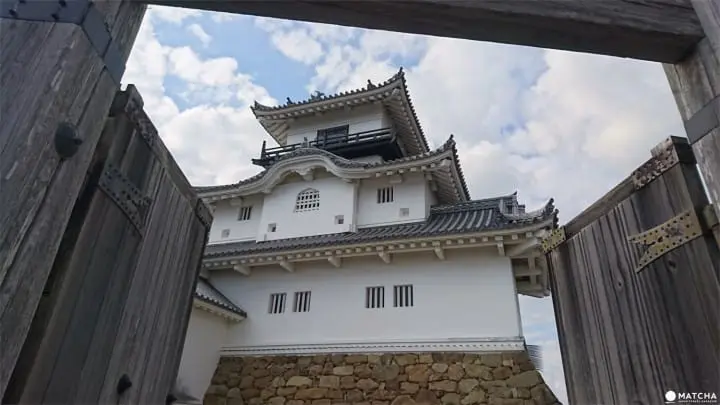Kakegawa Castle, Shizuoka: An Authentic Castle Experience Awaits You

Japan has numerous historical castles to enjoy, but only Kakegawa Castle in Kakegawa, Shizuoka prefecture was rebuilt using traditional construction techniques. Come visit this wooden castle and get a real appreciation for the Japan of old!
Onna Joshu Naotora, which will begin broadcasting in Japan on NHK on March 26th, is set during the Sengoku era, and filmed at Kakegawa Castle in Kakegawa, Shizuoka prefecture.
This reconstructed castle tower, complete with a museum displaying a wide variety of artefacts, is a little-known wonder that Japanese history buffs will surely want to see. Today let's head out and visit this traditionally reconstructed wonder.
The History of Kakegawa

Kakegawa Castle was first built in the Bunmei era (1469-1487) and passed into the hands of the Tokugawa family in 1568. After the Battle of Odawara in 1590, the castle was granted to a retainer of Toyotomi Hideyoshi's, Yamauchi Katsutoyo, who completely renovated the structure according to the latest contemporary designs - the majority of which are still standing today - and is said to have been the man behind the layout and building of the town itself.
In fact, portions of the stone walls, moat and gate are still original to the castle built in the late 1600s.

The Yamauchi family crest engraved on a door handle in the daimyo's palace
Throughout the castle tower, palace area, and other buildings you will find the kamon, or family crest, of the Yamauchi family.

A statue of Yamauchi Katsutoyo on the first floor of the castle
The castle suffered through various earthquakes over the centuries and was partially rebuilt, and later used as a governmental building after the Meiji Restoration. Further earthquakes ultimately knocked down what was left of Kakegawa Castle, although afterwards Ni-no-Maru Goten, the daimyo's palace, was rebuilt right away, and remains to this day an authentically built period structure.
Ni-no-Maru Goten was recognized by the government as an Important Cultural Property in 1980 and is an incredible place to visit, with its many long corridors, tatami rooms and historical artifacts on display. There are also numerous gardens, smaller structures, wells, and other spots that have been largely unchanged by the passage of time here as well to discover.
Modern Kakegawa Castle?

After the earthquake, Kakegawa Castle, specifically the castle tower itself, remained in ruins from the Showa era (1926-1989) until 1994. An incredible public campaign raised the funds necessary to rebuild not only the tower, but also some of the walls, and the bailey.
What makes this reconstruction so incredible and different from others is that Kakegawa Castle was entirely rebuilt based on extant historical diagrams from 1644 using traditional methods and materials. In other words, Kakegawa Castle is the only authentically reconstructed castle in Japan, built entirely from wood and historically accurate iron nails.
There are no elevators or gently curving stairs to ascend to the top of the castle tower here - in fact, the steps are exceptionally steep and almost unnerving to climb. You may find yourself wondering just how people could race up and down from the observation area on the fourth floor, but according to the guide, it can easily be done once you are used to it.
Before you enter the castle tower or daimyo's palace, you must remove your shoes in order to protect the wooden floors from damage, and you have to really watch where you step! On the first level, there are many ishi-otoshi, large holes in the floor through which soldiers would drop stones or thrust spears downwards at attackers.
In other areas of the castle you will also find sama, which are holes cut into castle walls that soldiers could fire guns or arrows from. The attention to detail that this reconstruction has will certainly leave a strong impression on you.
When Visiting Kakegawa Castle

One of the nearly 500-year-old warriors that wander the grounds
Photography is allowed throughout Kakegawa Castle, and here and there you will find small details that really demonstrate just how much effort was put into the reconstruction of this castle. It is so well built that it has been used time and time again in period pieces in Japanese cinema and television. In fact, ”Ame Agaru” (”After The Rain”), a joint Japanese and French production of the last script written by Akira Kurosawa, was filmed here.

In Ni-no-Maru Goten, which is where many of the artifacts are housed, you will find plenty of exciting things to see, such as this suit of armor standing in a dimly lit corridor. Usual displays of armor rely on the beauty of the craftsmanship to impress viewers, but coming around the corner to see this right before your eyes is an experience you won't soon forget.
Kakegawa Castle is a must for fans of Japanese history, cinema, and culture. If you are going to be traveling in the area, please stop by and see the incredible work that went into this reconstruction, view the many gardens, and get an authentic taste of a true Japanese castle.
You May Also Like
A Castle Surrounded By Pink Blossoms - The Sakura At Odawara Castle
The Wedded Rocks - A Stunning Sight Off Mie’s Coastline
Make Your Own Luck! Visit The Seven Deities Of Good Fortune
Let's Hit The Road! A Trip To Wakayama Prefecture
Learn The Impossible! Untranslatable Japanese Phrases
Writer, translator, designer, weirdo.







































![[Kanazawa] Enjoy the world of gold leaf to the fullest in the city with the highest production volume in Japan](https://resources.matcha-jp.com/resize/720x2000/2025/11/12-249564.webp)
![[2026] Family Winter Trip to Suzuka Circuit! – For Both Day trips and Overnight Stays!](https://resources.matcha-jp.com/resize/720x2000/2025/12/26-254097.webp)

![[2026] Top 5 Strawberry Picking Spots in Tokushima, Naruto| Farms and Access Guide for January to May](https://resources.matcha-jp.com/resize/720x2000/2025/03/06-227165.webp)
![[Yamanashi/ Hokuto City] 4 Hot New Spots Opening in 2026](https://resources.matcha-jp.com/resize/720x2000/2025/12/12-252747.webp)